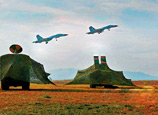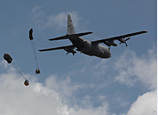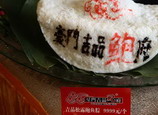
In the wartime, numerous revolutionaries in Shaanxi devoted a lifetime to the cause of national independence and people’s liberation, and some even sacrificed their lives. As a result, there is no shortage of local revolutionary sites here. Set foot on these relics and you will travel back to the eventful days.
Malan Revolutionary Site, Xunyi County, Xianyang
Location: fifty-three kilometers to the Xunyi County, Malan Town
As early as the Agrarian Revolution, Malan was already a major center of activity in the Shaanxi-Gansu Revolutionary Base Area. Many a proletarian revolutionary once came here, including Peng Dehuai and Deng Xiao ping. They stayed here for eight months, together with the main forces of the Red Army, leaving plenty of historical relics and memorable stories.
Site of Zhaojin Revolutionary Base Area, Tongchuan
Location: Zhaojin Town, Yaozhou District, Tongchuan
National Base of Patriotism Education, National Base of Defense Education
Main scenic spots: Shaanxi-Gansu Revolutionary Base Area, Zhaojin Revolutionary Memorial Museum, Xuejiazhai, Red Army Barracks Site, Xiangshan Temple of Shaanxi (a Buddhist shrine) and so on.
In 1932, revolutionaries including Liu Zhidan and Xi Zhongxun founded a revolutionary base in this mountainous area, which was the first of its kind in the northwest China. The Shaanxi-Gansu Revolutionary Base Area and Northern Shaanxi Revolutionary Base Area were founded later on the basis of it. Meanwhile, these military leaders formed the 26th Army of the Red Army, training a great number of talents for the Chinese revolution. Zhaojin is therefore a critical place and “Zhaojin in the north” used to be compared with “Ruijin in the south.”
Note: Ruijin was the capital of the Chinese Soviet Republic (1931-1937).
1. Malan Revolutionary Site
2. Liu Zhidan
3. Xi ZhongXun
4. Site of Zhaojin Revolutionary Base Area
Anwu Revolutionary Site
Location: Anwubao, Jianglu Village, Jingyang County
Anwu Youth Training School was set up in 1937 in the KMT-controlled area by the youth committee of the CPC to meet the trend of the history and demands of the youth to resist against Japanese aggression.
As a wartime school aimed at nurturing youth leaders, it formed 127 companies and trained more than 2000 students in two and a half years, remarkably boosting the youth movement during the anti-Japanese War. It is therefore of great importance in the history of the youth movement in China.
Fu-Mei Battle Memorial Museum
Location: Changxing Town, Meixian County, Shaanxi
Fu-Mei Battle is the largest battle in the northwestern field of the War of Liberation. More than 3,000 PLA soldiers fell and were buried here. Half a century has passed and the wartime is long gone, but the stories of the eternal heroes will endure forever.
Mount Huanshan Revolutionary Site
In June, 1949, the People’s Liberation Army braved a less travelled way to the top of the precipitous Mount Huashan, mounted a surprise attack at the remaining rebels of the KMT and smashed them all at one stroke, which is called “Mount Huashan Battle” today.
Zhichuan Town Revolutionary Site
Location: Zhichuan Town, Hancheng
In September 1937, the Eighth Route Army crossed the Yellow River at Zhichuan town and came to the frontline to resist the Japanese attack. The formidable Army scored one victory after another, contributing a lot to the final victory of the war against the Japanese.
Wei-Hua Uprising Memorial Museum
Location: Huaxian County, Weinan
Weihua Uprising, a remarkable battle led by the CPC, broke out during the First Revolutionary Civil War (1924---1927). More than three hundred local citizens lost their lives during this three-month revolt. It had earth-shaking implications in northwest China and was famous for its large scale and profound impact.
















 Bodyguard trainees experience 'Hell Week' in Beijing
Bodyguard trainees experience 'Hell Week' in Beijing


![]()
